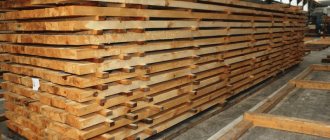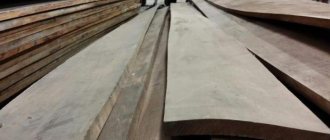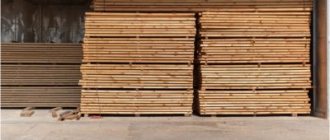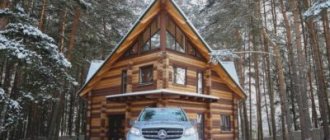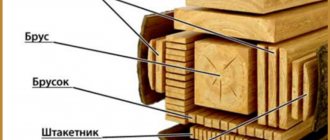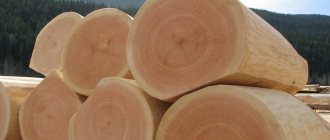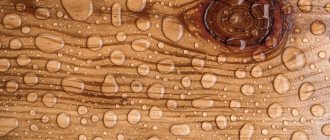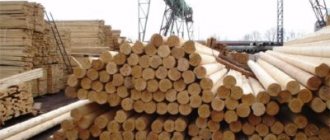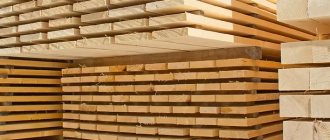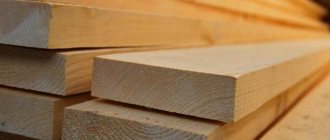Wood products that meet modern requirements can only be obtained from specially selected and prepared raw materials. The humidity indicator becomes decisive in this situation. It takes a long time to bring natural material to the desired condition using the natural method. Depending on the breed, this can take up to several to several decades. If you use a wood drying chamber, the time is significantly reduced. Large production associations have been using such equipment for lumber for a long time.
For small companies, individual entrepreneurs and home craftsmen, this issue becomes relevant, since boards and timber with natural moisture are much cheaper, but they are not suitable for the production of high-quality products. Waiting for the wood to dry naturally is too long. When choosing a method of forced high-quality drying, the question arises whether to purchase ready-made chambers or make them yourself. But first of all, it is necessary to understand the theory, principles and features of this operation.
Wood drying technology
Experience has shown that the process of removing moisture from lumber will be effective if the general rules are followed. They are determined by the following criteria:
- Drying chambers must meet performance and safety standards;
- Strict adherence to drying regimes;
- Correct placement and fixation of workpieces, eliminating warping and cracking;
- Control at all stages of the operation, from preparing raw materials to unloading wood from the chamber.
If the wood dryer is made by yourself, then test drying should be carried out to ensure compliance with industry standards. This will make it possible to adjust the operation mode for a specific device. The basic parameters are the initial moisture content of the wood, the thickness of the timber, boards, and species. According to the rules of the procedure, the drying speed is determined. Deviations are not desirable. Forcing the operation by increasing the temperature will lead to changes in the color of the array and deterioration in performance.
A typical mistake is the incorrect laying of lumber. While in the wood drying chamber, the workpieces undergo structural changes and strong internal stresses arise. When laying, it is necessary to forcefully fasten the material. The boards are laid out tightly to the base and spacers between them for free air movement. Distortions and deviations from the flat plane of each workpiece are eliminated. Otherwise, drying wood can hopelessly damage the lumber. High-quality products will no longer be possible.
Forced air supply significantly speeds up the process. Drying technology has been developed by several generations of craftsmen, and the accumulated experience shows that neglect of the rules causes unnecessary costs, increased cost of the final product and a decrease in its quality.
Wood moisture content
To determine the processing mode, it is necessary to check the lumber according to basic indicators. These include species, board thickness and humidity. Drying fresh wood is more difficult. In addition to high humidity, conifers produce resin and a significant shrinkage rate. In such cases, the operation is carried out in two stages with different modes. Pre-drying to 20%, then subsequent drying to the desired value, usually 8-12%. This amount of moisture during the manufacturing process of a product is considered acceptable.
It is impossible to bring the workpiece to lower humidity values, with the exception of special cases of preparing wood with special qualities. An overdried tree begins to absorb moisture from the air, the product swells, changes its geometry until the finished structure is partially or completely destroyed. It is recommended to stop the process when the recommended values are reached. A wood dryer must be equipped with humidity control devices.
Operating principle of convection dryers
Convection drying devices built on the principle of circulating warm air between the original lumber. In one cycle, which lasts from 5 to 14 hours, the wood is dried to the desired percentage of humidity. In addition, the fundamental difference between convection dryers is that the wood is heated by a gaseous coolant. It could be:
- steam;
- heated air-gas mixture;
- gases products of combustion.
When wood material is heated, moisture is released, which is thrown out with the coolant.
Closed-type drying chambers in the form of a separate box are more compact and are distinguished by the fact that a constant set temperature and humidity are maintained throughout the entire volume of the chamber. This design of ovens allows you to dry the original wood material of any type to the required moisture content.
For domestic needs, you can make a minimal design of an infrared dryer
Why is drying needed?
When performing construction work and in furniture production, the permissible moisture content of wood is indicated in the design and estimate documentation. Raw materials are brought to the required condition in drying chambers of various designs. For certain operations in construction, a humidity of 20% is allowed. Furniture is made from 8-10% solid wood. The values are determined taking into account possible changes in structure and geometry during further operation. Workpieces that have not been brought to the required characteristics by drying cannot be used in production.
Wood products are mostly used indoors, where humidity is lower than natural outdoors. Significant changes in dimensions and the occurrence of stress in the product due to drying are inevitable. Cracks and warping that appear impair the appearance and performance characteristics of the finished product. It is not cost-effective to remove moisture in a natural way on an industrial scale, since the raw materials will have to be procured several years before their use. Only a dryer for boards and other lumber can quickly and efficiently remove excess moisture and make the material suitable for producing high-quality products.
Drying modes
The effectiveness of drying directly depends on the composition of the air, its humidity and temperature. It’s not worth experimenting with time and temperature without experience, as you can ruin the workpiece. The following values of the normal drying mode for a 40-50 mm board in a convective type chamber can serve as a guide:
- Beech, maple, larch. Temperature 60°C. Drying time at humidity > 35% is at least 130 hours, at 20-25% - about 40 hours;
- Oak, ash, walnut. Temperature 50°C. Drying time at humidity > 35% is at least 255 hours, at 20-25% - 95-100 hours;
- Alder, birch. Temperature 60-65°C. Drying time at humidity > 35% is at least 90 hours, at 20-25% - 30-40 hours;
- Pine, cedar, spruce, fir. Temperature 70°C. Drying time at humidity > 35% is about 70 hours, at 20-25% - at least 30 hours.
Pre-drying of wood with excess moisture content of more than 60% is carried out in a forced mode, increasing the temperature by 10-20%. Deciduous ones can be dried at higher temperatures than coniferous ones.
Drying units based on SKRON AERO
Drying chambers supplied assembled
| SKRON AERO drying chambers with aerodynamic heating | |||||||
| Loading*, m3 | 7 | 9 | 11 | 14 | 18 | 20 | 25 |
| Camera dimensions**, m | 7.7x2x2.2 | 7,7×2,45×1,9 | 7,7×2,45×2,2 | 7,7×2,45×2,6 | 14,5×2,45×1,9 | 14,5×2,45×2,1 | 14,5×2,45×2,45 |
| Engine power, kW | 22 | 30 | 37 | 45 | 55 | 75 | |
Drying complexes supplied in modules
| Drying complexes SKRON AERO with aerodynamic heating | ||||||
| Loading*, m3 | 20 | 24 | 28 | 36 | 50 | 60 |
| Camera dimensions, m | 7,7×4,9×1,8 | 7,7×4,9×2,4 | 7,7×4,9×2,6 | 14,5×4,9×1,9 | 14,5×4,9×2,45 | 14,5×4,9×2,7 |
| Engine power, kW | 74 | 90 | 110 | 150 | ||
DIY drying chamber
If you decide that you are making the dryer yourself, then you should know the main structural elements, their purpose and installation or construction methods. In this case, only those materials are used that can withstand the upcoming loads. Conventional building materials cannot be used. Drying chambers for lumber consist of the following elements:
- A room equipped with a thermal insulation system;
- Heat sources;
- System of forced air supply to the processed material;
- Equipment for laying workpieces;
- Shipping and loading system;
- Devices and tools for controlling humidity and temperature.
Various devices are used as heat sources. Electric heating elements that consume significant amounts of energy. Gas burners are considered more efficient. Sometimes boiler equipment is installed that has high efficiency indicators. The easiest way to make drying chambers for lumber is the convective type. It is difficult to independently assemble an aerodynamic or microwave structure without certain knowledge and skills.
Selection of premises
Choosing the right place for drying will guarantee the effectiveness of the design. You can use either an existing premises or a building erected specifically for this purpose. It must meet the following conditions:
- Thermal insulation. The temperature difference inside and outside the dryer is significant, and in order to maintain it at the required level, heating devices are turned on. Ideally, walls and insulation should have energy efficiency ratings similar to those of a residential building. Thermal insulation layer is made on the walls, floor, ceiling. In this case, the heating devices are turned on for a short period of time during critical temperature drops, and the rest of the time they are turned off, which significantly saves energy consumption;
- Ventilation or dehumidification of air by convection along the internal circuit. Timely removal of moisture will be the key to reducing drying time, so effective ventilation or condensate collection on a cold heat exchanger is necessary in the room. When designing a dryer, this aspect should be emphasized;
- Safety. The electrical circuit, instruments and mechanisms are taken from samples intended for operation at high humidity and temperature, for example, from equipment for the construction of saunas and baths. Fire safety requirements, protection of human health and life must become a priority.
The operating principle of the wood camera is not complicated. But it can only be implemented in a suitable room. The costs of erecting and re-equipping the chamber are one-time. If all requirements are met, then in further operation the dryer, with minimal energy and maintenance costs, is able to produce the required volume of dried wood within the stated period with the desired percentage of humidity.
Dryer body
The body of the kiln for drying lumber is a metal structure built on a foundation. The frame and walls are usually made of aluminum or carbon steel sheets with an anti-corrosion coating. Internal structural elements: deflectors, suspended ceilings and control system units, as well as auxiliary structures are made of aluminum, and mineral wool is used as insulation.
Particular attention should be paid to mineral wool, since the use of low-quality products can give a negative result. Therefore, you should use only well-known mineral wool from trusted companies, which will prevent the heat insulator from settling, and the gaps will allow the insulation to dry even if moisture gets in.
Housings for placing drying equipment
Construction and installation of drying chamber equipment
There are ready-made cameras on sale with excellent performance characteristics, but their cost may not be recouped even over many years with small production volumes. The choice of small companies and individual entrepreneurs often falls on independent construction of the desired structure. The design of a convective type drying chamber is simple. You can use an existing room or building, which is equipped with the devices, instruments and mechanisms necessary to solve the problem.
It should be remembered that the connection of gas equipment must be carried out by authorized organizations. The electrical circuit is designed by a qualified electrician, taking into account the use of equipment at elevated temperatures inside the chamber. Devices, cables, fans, lighting sources are marked with markings indicating the appropriate temperature and humidity conditions of operation. The premises belong to the category with increased fire danger. Fire extinguishing systems are provided at the design stage to avoid problems with regulatory authorities. The design capacity is consistent with the resource supply capabilities. In some areas there are restrictions on the supply of gas and electricity.
Equipment
The set of equipment is small, but requires careful selection when purchasing. The design of the drying chamber, in addition to the standard set of heating element, forced air supply systems can be additionally equipped with devices that increase productivity and automation systems. Temperature sensors included in the circuit can turn on or off the heat source in a timely manner, without human intervention. The equipment for drying chambers includes a device for collecting and removing condensate. High temperature is not enough to quickly remove moisture if there is excess moisture in the air. The cold circuit effectively traps water particles on the surface and is recommended to be installed to increase productivity. Improves performance and preheating of incoming air, which does not cool the processed lumber, thereby reducing drying time.
Characteristics of dryers
The type of equipment has a rectangular shape, similar to a cabinet, lined with removable panels, at the base of which is a frame.
The composition of the device includes:
- Refrigeration compressor.
- Heat exchange system.
- Refrigeration fittings.
- Evaporator.
- Control automation.
Condensation drying chamber
The quick installation and compact design of the dryer puts it into operation instantly. The heat exchangers are connected to each other by pipelines through which air circulates.
The unit is fully automated and controlled using a programmable controller. Thus, all failures or emergency situations are strictly under control.
The types of apparatus can be of two types, which correspond to different drying temperatures:
- drying up to +45°C - intended for soft wood;
- drying up to +60°C - for hard rocks.
Condensation drying of wood is a high-quality technology that uses a small volume of lumber (up to 30 m3). Also, the process itself is environmentally friendly and safe, and does not involve the release of waste. Enterprises use this method to minimize production costs and the participation of workers.
Drying chamber operation
Maintenance of the structure, when it is assembled correctly, does not seem to be a difficult process. Drying chambers are not recommended for storing, even temporarily, any foreign objects or goods. Cleanliness is maintained inside the premises. Regular cleaning is required. Removing dust, dirt, and sawdust is necessary, since sufficiently powerful air convection inside the chamber will inevitably lead to foreign substances entering the heat sources, which will reduce their performance, and in the case of using electric or gas heating elements, to the risk of fire. Regular inspection of all structural elements is carried out: thermal insulation, ventilation, heat sources.
